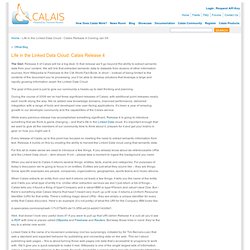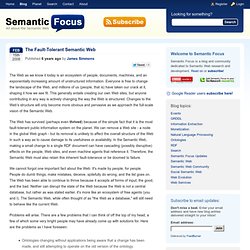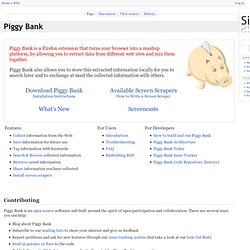

Sparql. Bibtex. Life in the Linked Data Cloud - Calais Release 4 Coming Jan 09. The Gist: Release 4 of Calais will be a big deal.

In that release we’ll go beyond the ability to extract semantic data from your content. We will link that extracted semantic data to datasets from dozens of other information sources, from Wikipedia to Freebase to the CIA World Fact Book. In short – instead of being limited to the contents of the document you’re processing, you’ll be able to develop solutions that leverage a large and rapidly growing information asset: the Linked Data Cloud. The goal of this post is just to give our community a heads-up to start thinking and planning. During the course of 2008 we’ve had three significant releases of Calais, with additional point releases nearly each month along the way. While every previous release has accomplished something significant, Release 4 is going to introduce something that we think is game changing – and that’s life in the Linked Data cloud. For this all to make sense we need to introduce a few things. A simple example: So.
OpenLink Data Explorer. The Fault-Tolerant Semantic Web - Blog - Semantic Focus. The Web as we know it today is an ecosystem of people, documents, machines, and an exponentially increasing amount of unstructured information.

Everyone is free to change the landscape of the Web, and millions of us (people, that is) have taken our crack at it, shaping it how we see fit. This generally entails creating our own Web sites, but anyone contributing in any way is actively changing the way the Web is structured. Changes to the Web's structure will only become more obvious and pervasive as we approach the full-scale vision of the Semantic Web. The Web has survived (perhaps even thrived) because of the simple fact that it is the most fault-tolerant public information system on the planet.
We can remove a Web site - a node in the global Web graph - but its removal is unlikely to affect the overall structure of the Web in such a way as to cause damage to its usefulness or availability. We cannot forgot one important fact about the Web: It's made by people, for people. Piggy Bank. Piggy Bank Contributing Piggy Bank is an open source software and built around the spirit of open participation and collaboration.

There are several ways you can help: Blog about Piggy Bank Subscribe to our mailing lists to show your interest and give us feedback Report problems and ask for new features through our issue tracking system (but take a look at our todo list first) Send us patches or fixes to the code Publish Semantic Web data on your web site (how-to) for Piggy Bank’s consumption Write and submit new screen scrapers for others to use Research Publications on Piggy Bank: David Huynh, Stefano Mazzocchi, and David Karger.
Related research: History Licensing & Legal Issues Piggy Bank is open source software and is licensed under the BSD license. Note, however, that this software ships with libraries that are not released under the same license; that we interpret their licensing terms to be compatible with ours and that we are redistributing them unmodified. Disclaimer Credits.